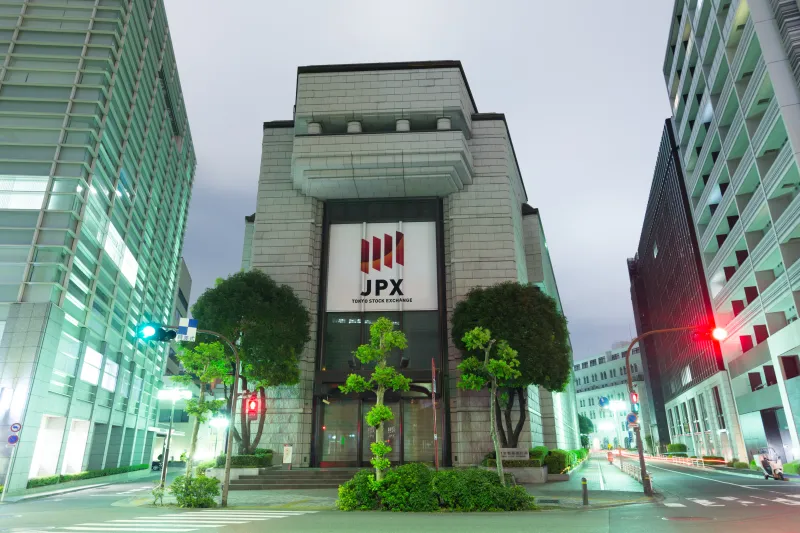In the process of helping his parents evacuate Fukushima after the twin disasters of tsunami and a nuclear power plant accident, Yu Shimizu thought a lot about sustainability – why it mattered, what more needed to be done. The next year, in 2012, he launched the Japan Sustainable Equity Strategy and became its lead portfolio manager, at SPARX Asset Management. The team he leads does rigorous work reviewing Japanese companies one by one, looking for stocks in companies that are on the path to becoming “sustainable”, where the stakeholder value of which enhances its economic value. In his role, Shimizu views himself as a bridge between the world’s investors and Japan. II recently chatted with him about the unique aspects of Japanese businesses, and entrepreneurial spirit that pervades at SPARX.
What is the overall philosophy behind the Japan Sustainable Equity Strategy?
Its aim is the sustainability of three elements – the world, the investment chain, which includes the companies we invest in and asset owners, and our own activities. Our vision is to make positive contributions to a better investment chain where our investments help to build a better society and successful, growing businesses.
What should global investors who are not deeply familiar with Japanese companies know about them and their approach to sustainability?
Japanese businesses have had a sustainability-like mindset much longer than you might expect. There are about 2,000 companies in the world with a history of 200 years or more, and 65% of them are Japanese. One reason so many Japanese companies thrive for long periods of time is the philosophy of Sanpo Yoshi, which means three stakeholders benefit from a business – seller, buyer, and community. For a long time that was the de facto solution for corporate governance. But actual shareholder rights lagged behind, because what we today refer to as a public company didn’t exist in Japan until 1865 – several centuries after European stock companies came to be. Shareholder rights were unclear in Japan for a long time, but there has been a lot of progress in that regard in recent years.
But we have much more to do. For example, as is the case with many countries, the Japanese people prioritize domestic issues. In terms of the supply chain, people monitor the domestic labor situation very strictly, but they don’t pay much attention to the labor situation in overseas factories.
What are the criteria used to determine which businesses to include in the strategy?
We view a business as sustainable when they create stakeholder value which enhances their economic value. We are not investing only in companies with perfect sustainability records. We also look at their potential and whether their ESG fundamentals are improving. One reason we look for businesses that are improving is valuations – companies with sterling ESG records are likely to be very expensive. Another, more important reason is that to help build a good society, we need to help the company that lags behind. In other words, we need to be forward looking and inclusive.
What are some signs of potential that you think indicate a company is improving its ESG profile?
Most common sign is the change in governance, and we try to capture the ripple effect from this. To do so, we view the stakeholder value holistically and structurally. Governance is the center of the stakeholder value, and social and environmental spread outward from there. Our definition of social is the direct stakeholders who have a relationship with the company – employees, suppliers, clients, and the local community. Environment is beyond social and therefore global. For example, a Japanese company and Brazilian forests are not directly connected, but the forest is s stakeholder all the same.
Being a Japanese asset manager must make those meetings with corporate leaders more productive. What are you looking for in the leadership?
The top management is very important as we consider an investment as is the support system for them. The improvement of a business’ fundamentals and the actions it takes depend on top management and how they motivate the employees. We like business leaders who are visionary, sincere and can clearly explain their rationale – we’ll take those traits over charisma any day. We do not like dictatorial leadership – we like leadership that is perceptive regarding stakeholders’ opinions, including ours. We also introduce our coaching methodology into conversations with the companies to let them know that we can help them improve. The purpose is to provide new information and awareness to the companies. For example, some companies are having ESG meetings after we suggested it. In another case, when activists were creating issues, we suggested the management that a vision statement would help, and the CEO sent a letter to investors as a result. Another company abolished its poison pill policy after our recommendations. We do discuss their ESG score, but today companies recognize it’s not just about the score – they need to improve their business activities or management strategy itself.
What led to the coaching approach?
Sometimes a person’s inner opinion differs from their outer opinion. The Japanese people do not like tough negotiation, so if we spoke too strongly to a business leader they may choose to close their mind and hide their inner opinion. If we ask them a very open question and then listen carefully and acknowledge their answer before providing feedback, then we can build very good relationship that allows us to better understand how the business is doing.
Why should a European investor consider it important to include Japanese companies and their sustainable strategies in their portfolios?
For starters, diversification and impact. Our Japan Sustainable Equity Strategy should be a good diversifier to mitigate risk of investing only in, say, “ESG Developed” region like Europe. Also, many European countries are very advanced in terms of ESG, so investing in Japan, which may be called “ESG Emerging” country, can help the world move forward toward greater sustainability.
Putting ESG aside for a moment , the Japanese stock market is relatively less efficient, so it adds a non-correlated pursuit of alpha. Our strategy’s alpha is mainly generated by stock selection. We do not bet based on sectors or size, which means you can enjoy unique alpha potential that is the result of our bottom up research capability.
What companies might investors be surprised to find in the strategy?
If you simply look at a sector or a business on the surface, some companies may not have a great ESG image. But we take a much more holistic view to understand the relevant trade-off. To illustrate, let’s take an air conditioning manufacturer that we are investing. First of all, they have an environmentally friendly technology. Second and perhaps a subtler consideration is the role air conditioner plays to solve global economic inequality by increasing the productivity of regions with tropical and subtropical climate. There is also an increasing risk of loss of lives as heat waves become more severe with global warming. This company fully recognizes its social and economic benefit, while minimizing the cost to the environment.
What do you see as the big differentiators for SPARX and the Japan Sustainable Equity Strategy?
We are based in Japan and we speak Japanese, so we are very good counterpart for companies we invest in. Our client base is global, and we have implemented global standard strategy quality, especially regarding ESG. We have been disclosing the strategy’s ESG score for greenhouse gas emission on a monthly basis, for example. And we’ve analyzed the future scenarios of climate-related risk in line with the TCFD format. Our team working on the strategy is very diverse. Nearly half of our team are women. Nor is everyone on the team Japanese. We believe that helps with better idea generation and decision making.
Another big advantage is that we’re independent investment company. In Japan, a lot of investment firms are either part of a larger financial group, or they have some type of shareholding or interest that might not be clear in the forefront, but it’s there in the background. So being independent like us and being around for 30 years, it’s a very slim number of asset managers if any. The foundational philosophy of our firm is that each individual should come up with their own investment hypothesis and seek investments that correspond to that in an active, high-conviction manner. Each portfolio manager has full discretion to invest as they see fit within the portfolio they manage – there’s no top down pressure to buy or sell. Our strategy is also an all cap strategy, and our colleagues manage other all-cap funds, and we have team meeting on a daily basis. But the weight commonality is less than 20%, which demonstrates our people are really thinking and acting independently. On this aspect, we think that we’re more entrepreneurial than any other Japanese asset managers.
What’s your goal as the leader of the strategy?
We want to be the bridge between Japan and overseas investors. To pursue that goal, we make every effort to build a high-quality Japanese equity strategy in line with the European standard for ESG. It’s not only about the performance, but also the reporting. We are writing monthly reports showing the data and explaining our activities, such as going into great detail on dialogue with the companies in the strategy. We also published the strategy’s annual report, which is very unusual in Japanese asset management. We are very open-minded and receptive to feedback from asset owners and the leadership at companies which we invest in. Ideally, we’d like more and more asset owners to read our reports and give us feedback, so that together with global investors we can contribute to global ESG development from Japan.






